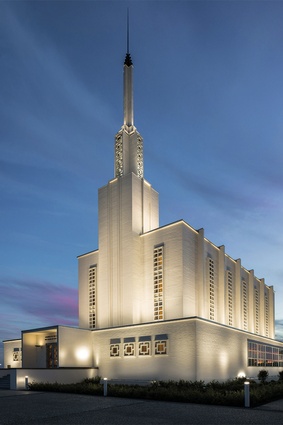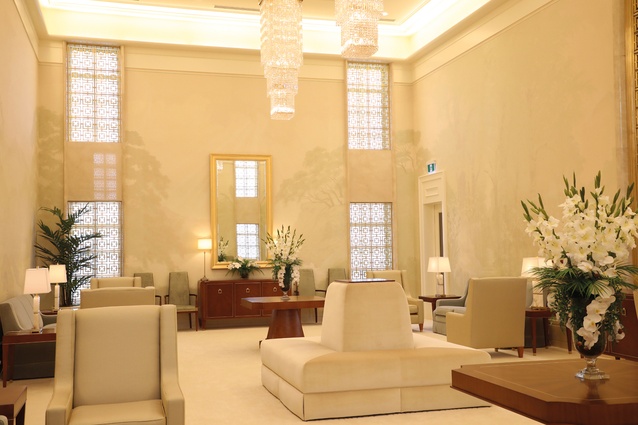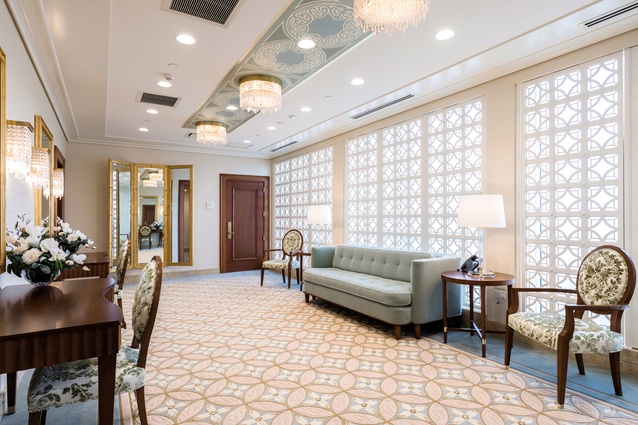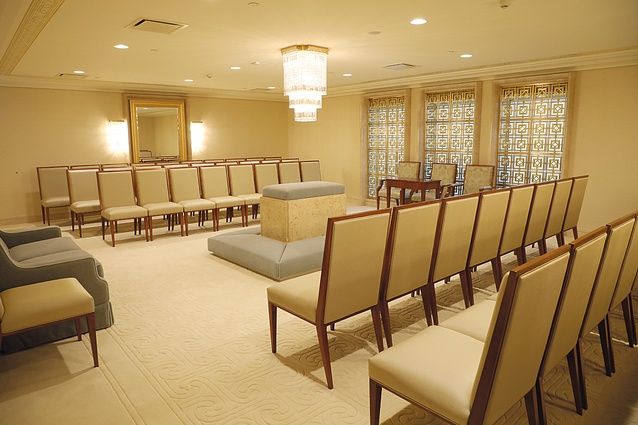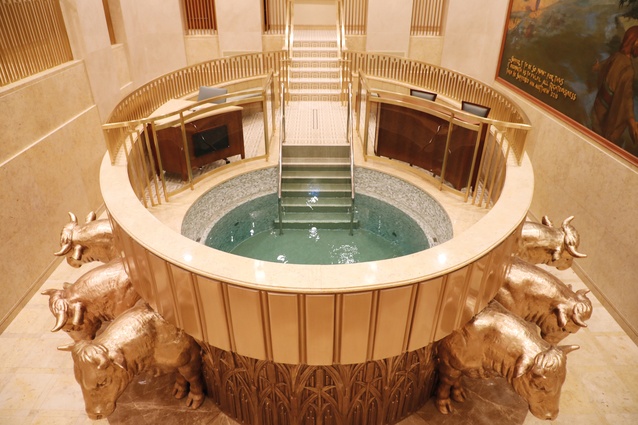Modern heritage
Following an extensive four-year programme of refurbishment and seismic strengthening, the Hamilton New Zealand Temple of the Church of Jesus Christ of Latter-day Saints (LDS) was recently opened to the public for only the second time in its history.
Prior to its rededication, guided tours showcased the heritage and holy purpose of a building that is a landmark, both day and night, on the edge of Hamilton. In secular terms, the experience was akin to visiting a high-end mid-century hotel in which every detail had been carefully crafted and arranged.
Members of the LDS church have been part of New Zealand society since the late 19th century. Architecturally, the church is best known for its modernist meetinghouses, which are instantly recognisable by their masonry block construction, slender spires and cream-coloured paintwork. The Hamilton New Zealand Temple, which was the first to be built in the southern hemisphere by the LDS church, is in some ways a meetinghouse writ large. What sets it apart, in addition to its singular purpose of serving all of the church’s New Zealand congregations, is its role as the showpiece feature within a designed community that dates to the 1950s.
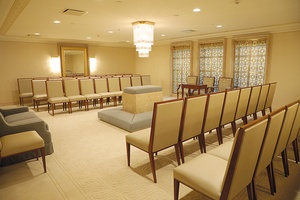
Church president David O McKay (1873–1970) visited New Zealand in the autumn of 1958 to dedicate the temple that gives the Hamilton suburb of Temple View its name. Prime Minister Walter Nash was also in attendance, such was the importance of the occasion. Earlier, a high school had been built on land at Tuhikaramea by members of the church known as labour missionaries; their efforts, literally and figuratively, gave rise to Church College and thence to the construction of the temple to the south of the campus.
Salt Lake City and LDS church architect Edward O Anderson (1891–1977) does not appear to have ever visited New Zealand. That makes it all the more remarkable that one of the outstanding qualities of the temple is the way in which it is integrated into its landscape setting, both within the terraced gardens of the temple grounds and in relation to the wider context.
When seen at night from numerous vantage points, the building is a brightly lit beacon: a human-made landscape feature in a metropolitan centre that is not known for its landmarks. By day, the alignment of the building directs the eye of someone standing at the back of the building towards Pirongia, the maunga that stands guard over Hamilton and Waipā district. This is a building that responds to and shapes its environment; this quality is often found in New Zealand architecture in remote rural settings but is far less common on the suburban fringe of a regional city.
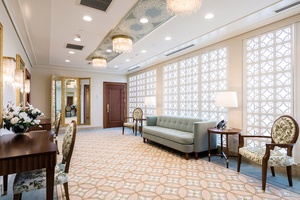
As with many, but by no means all, purpose-built Christian churches around the country, the temple acknowledges the links it has with Māori culture and community through its internal ornamentation. The decoration in a number of rooms, whether in the carpeting, wall grilles or ceiling paintings, integrates New Zealand’s unique visual culture into areas of the temple that hold high value for its users.
In the celestial room and sisters’ room for wedding preparation, for example, the happy marriage of modernist geometry and kōwhaiwhai patterning reflects the original design of the building and its sensitive interior re-imagining. For, whereas the guided tour conveyed the impression that visitors were stepping back in time, in fact, a comparison with historical photographs shows that the interiors are newly minted, encompassing both a significant reconfiguration of the rooms within the temple and their fit-out with new fixtures and furnishings.
Before the building was dedicated on 20 April 1958, it was open to the public and more than 110,000 people are said to have experienced the building at that time. In September 2022, hundreds of visitors took the chance to inspect the newly renovated building before its rededication on 16 October. Inside a building that confidently reconciles American modernist architecture, possessing strong Wrightian overtones, with the traditional art forms of New Zealand, architecture as a vehicle for noble expression was to the fore. Whatever one’s views on contemporary religious practice in New Zealand, the open house was an act of generosity that shared a modern heritage building with the wider community.
We found an interesting article the Temple shared comparing each of the rooms from the 1950s to today. Click here to view the comparison images.

